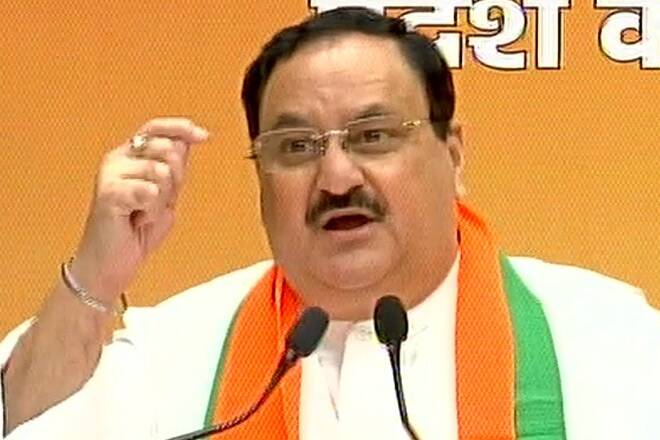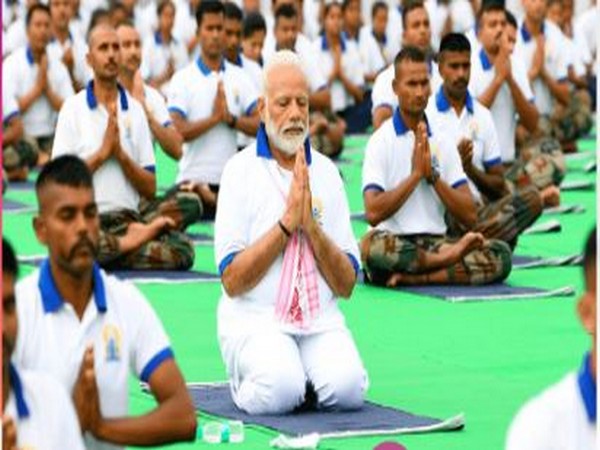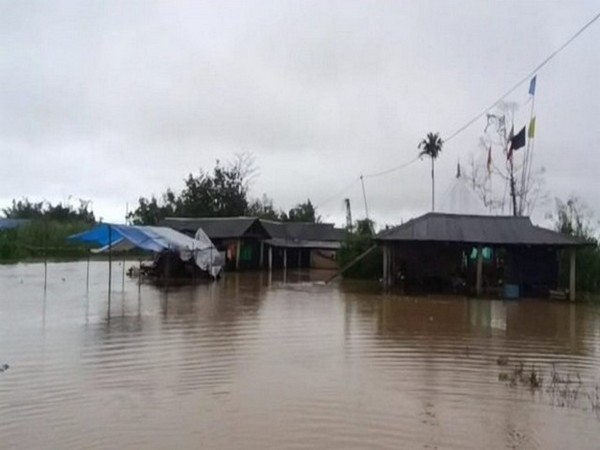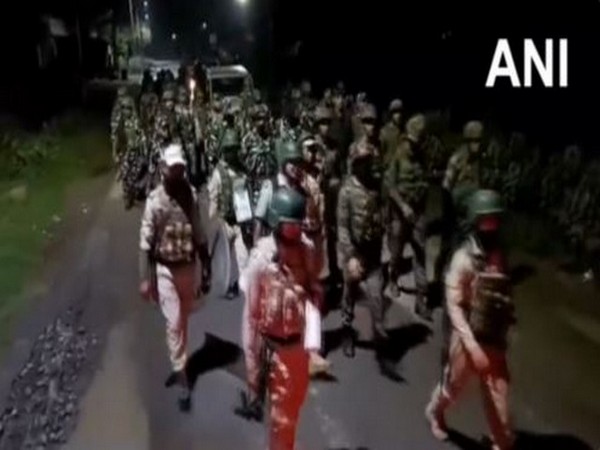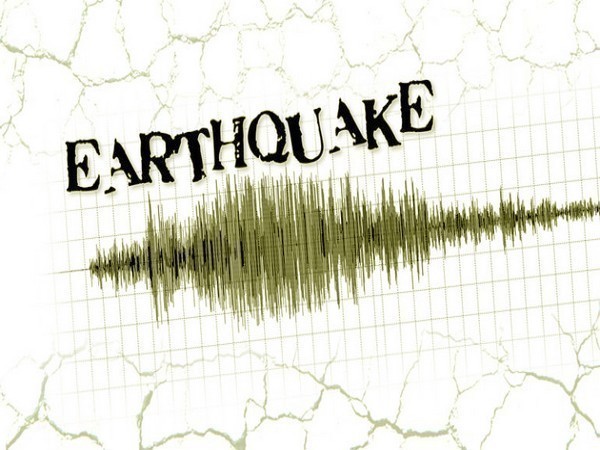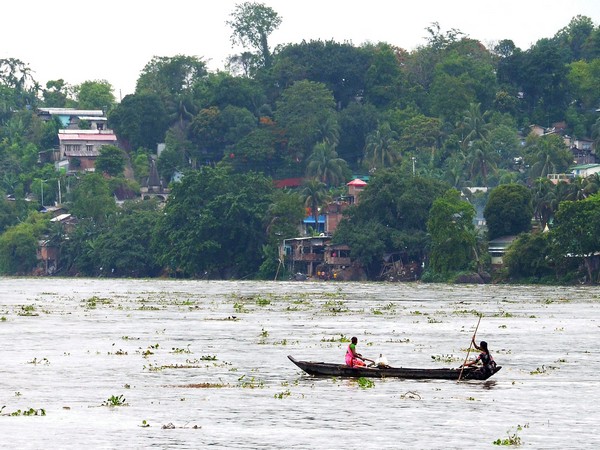A mural installed at the newly inaugurated Parliament building in India has created ripples among some of India’s neighbours, including Pakistan, Nepal, and Bangladesh, which could lead to an avoidable diplomatic frisson in the region. The mural depicts India as a unified region that encompasses areas that are now independent sovereign states into one “undivided” India or Akhand Bharat. The mural is a historical depiction of the region that was once believed to be ruled by Emperor Ashoka from circa 268 to 232 BCE, or nearly 2300 years ago. Then, Ashoka, the third Mauryan emperor, is said to have reigned over a region that included modern-day India and areas that are now Afghanistan, Pakistan, Nepal, Bangladesh, Myanmar, and Sri Lanka.
The Hindu right-wing names that “so-called” undivided India, Akhand Bharat, and over the years, particularly before Independence in 1947, many ideologues were of the opinion that a region resembling the map depicted on that mural should be the rightful territory of India.
The installation of the mural has led to controversy. First, various voices from the ruling Bharatiya Janata Party (BJP) have sought to resurrect the concept of Akhand Bharat as a cherished goal for India in what could appear to be an imperialistic aspiration. Second, India’s neighbours such as Pakistan, Nepal, and Bangladesh, have criticised the depiction of the mural and its installation in the highest legislature of the country. Unsurprisingly, they do not want to be showcased as being part of a “unified India”.
The map shown in the mural is ancient and like all historical artifacts it is of huge significance and a part of India’s heritage. But does it belong in Parliament? It is the Constitution of India that provides for a bicameral Parliament, which in turn is the highest legislature of the country and one that is meant to uphold the principles of the Constitution. Depicting a bygone era’s map that purportedly shows an empire that is no longer relevant (except for its historical value) in the building housing India’s highest legislature can seem like a brazen act of bullying India’s weaker neighbours, which are all relatively small in comparison.
Instead, if that Akhand Bharat map, replete with all its historical significance, was ensconced in a museum, it is likely that India’s neighbouring countries, now depicted as part of a wishful dream in a mural in Parliament, would not have bothered much. It’s ancient history. It belongs to a museum.
Indians’ trust in media is declining as they consume less news
More bad news for Indian media. Just 38% of Indians trust the news that is offered by TV, print, online, and social media platforms. That means more than 60% of Indians do not trust the news that they are exposed to. What is more, Indians’ interest in news is falling and so are the revenues at the prominent media outlets. Worse, India’s standing in the global rankings of press freedom and journalists’ freedom continues to decline.
According to the annual Digital News Report for 2023 by the Reuters Institute for Study of Journalism (RISJ), headquartered at Oxford University, “India slipped to its worst position on record in the Press Freedom Index this year (161 out of 180 countries), published by Reporters Without Borders (RSF).”
The Reuters report predictably also finds that more Indians are accessing news online rather than through traditional platforms such as print. However, across different sources of news, the report finds that consumption and sharing of news have steeply declined. Access to online news has fallen 12% from last year, especially through social media, which recorded an 11% fall. Television has also seen a 10% fall. The report suggests that this may be partly because of the lessening impact of the pandemic after lockdown restrictions were withdrawn in April 2022.
The other trend noted by the report is the rise in audiences for “digital-born” brands. While these such as the independent bilingual NewsClick as well as those owned by older media groups such as Catch News (owned by the Patrika group) are still not comparable to the reach of legacy media entities, they are seen to be carving out “dedicated and engaged audiences”.
The one problem with the survey as far as India is concerned is its sample size. For a population of more than 1.4 billion (with an estimated internet penetration of 60%), the sample size for the Reuters’ survey was just 2,016 respondents. As a comparison, Finland with a population of 5.5 million (a borough of Delhi would have more people) had a sample size of 2,027 people; the UK with a population of 69 million had a sample size of 2,107; and the US with a population of 331 million had a sample size of 2,081.
The report, however, states in its methodology section that the “data from India, Kenya, Nigeria, and South Africa are representative of younger English speakers and not the national population because it is not possible to reach other groups in a representative way using an online survey.” The survey was done mostly in English in these markets, and, therefore, the findings ought not to be taken as nationally representative.
Even so, the key findings–declining consumption of news, less trust in media, and pressures on freedom of the press–are all signals that all is not well for the media in India.
India’s diaspora is bigger and more influential than any other
Some of the world’s biggest global corporations and many of its most powerful ones are today headed by people who were either born in India or have Indian origins. Google, Microsoft, the World Bank, IBM, Adobe, Chanel, and even Britain, where the government is headed by Rishi Sunak, all have Indians at the helm.
India’s diaspora–the global community of people with Indian origins or migrants from India–is today the largest. According to the Economist, of the 281 million people in the world that are classified as migrants, Indians account for 18 million. In comparison, China whose population India has recently surpassed, has 10.5 million, and Mexico 11.2 million.
Numbers apart, migrant Indians have been more successful, influential, and powerful than say migrants from other countries. Besides the top jobs at giant multinationals, surveys show that the Indian diaspora tends to be better educated and richer than other migrants.
In countries such as the US, they have also exerted their influence to raise the image of their home country. The Indian lobby in Congress and in the states in the US has significant clout. This is also something that rubs off on the Indian government and its standing in the world. Although the exact numbers are not easily available, funding and other resources that non-resident Indians and overseas citizens of India poured in during the elections of 2009 and 2014 are believed to be significant, much of that coming in to support the Narendra Modi-led BJP campaign.
The kind of welcome that Modi has received in the past and continues to do when he visits foreign countries such as the US, UK, and Australia, is massive and unparalleled by what happens when leaders of, say, China or Mexico travel abroad.’
This is symbolic of a cachet of the potential soft power of the Indian diaspora. Modi and his regime are more than aware of this and he has leveraged it systematically on his foreign tours. On June 21, Modi will be visiting the US again, Besides his official engagements with US President Joe Biden and an address to the joint session of the US Congress, he will also engage with gatherings of the diaspora, which have in the past been elaborate extravaganzas where the power of the Indian migrant is showcased. On this visit, you can expect the same.
China & India’s row over journos
Earlier this month, China asked the last remaining Indian journalist to leave the country. The forced exit of the journalist from the news agency, Press Trust of India, will leave China with no Indian journalist. Indian news outlets had four journalists in Beijing. Over the course of the past month, every one of them has been asked to leave the country.
The same thing has happened on the other side. India has rejected visas for Chinese journalists intending to work in the country and by the end of the month there will be none in India.
The tit-for-tat action is a consequence of the growing tension between China and India, particularly over the border dispute that has been simmering on the northeastern perimeters of India. Both sides accuse each other of transgressing into territories that each claim is theirs. Until that is resolved, it is unlikely that the two countries’ relations regarding other aspects will improve.
India bans a documentary… again
The Allahabad High Court in India has disallowed the news agency Al Jazeera from broadcasting an investigative documentary film on hate crimes against Muslims by the Hindu majoritarian groups in the country. The court decided that the film, “India… Who Lit the Fuse?” could lead to “evil consequences”.
According to Al Jazeera, “India … Who Lit the Fuse? is part of its Point Blank investigation series. Backed by testimony and documents, it uncovers the activities of Hindu supremacist outfits, such as the Rashtriya Swayamsevak Sangh (RSS), the far-right ideological mentor of the ruling Bharatiya Janata Party (BJP)”.
Earlier, India had banned the BBC’s two-part documentary titled The Modi Question, which investigated Narendra Modi’srole in the Gujarat riots of 2002 when he was chief minister of that state. The Indian government had described the documentary as “hostile propaganda and anti-India garbage” with a “colonial mindset”.
Read More: lokmarg.com
